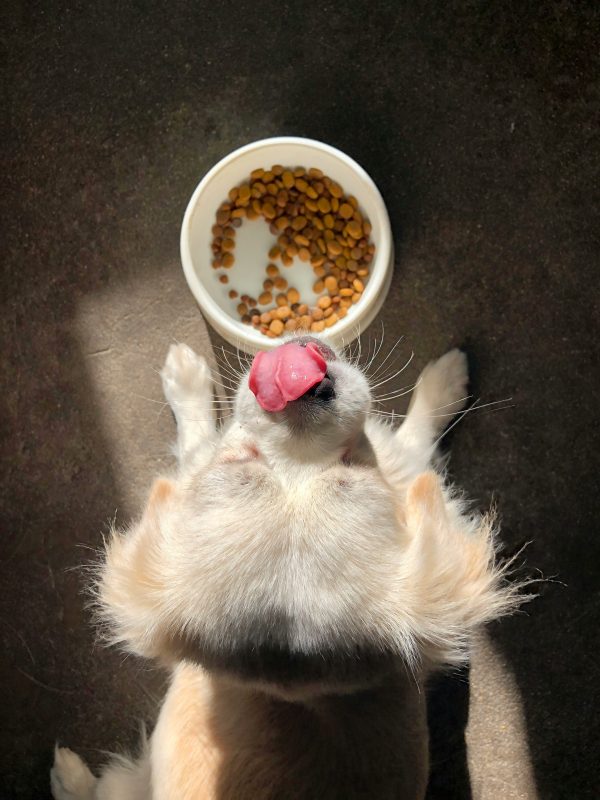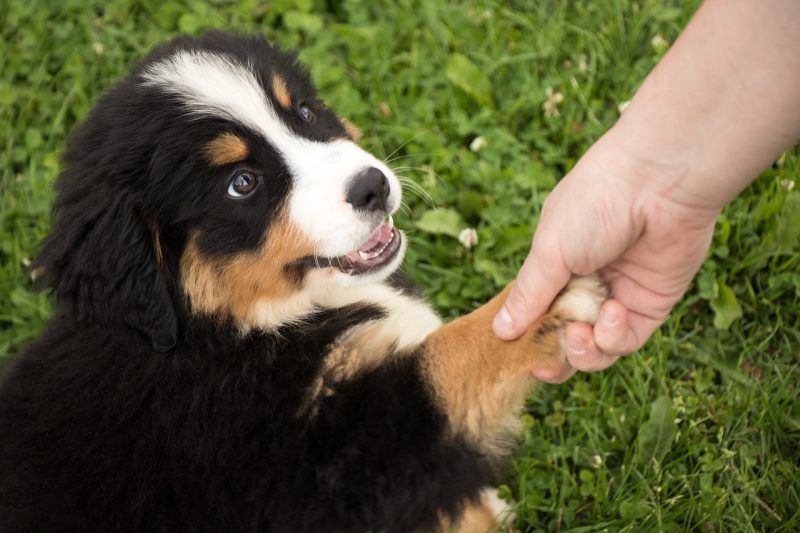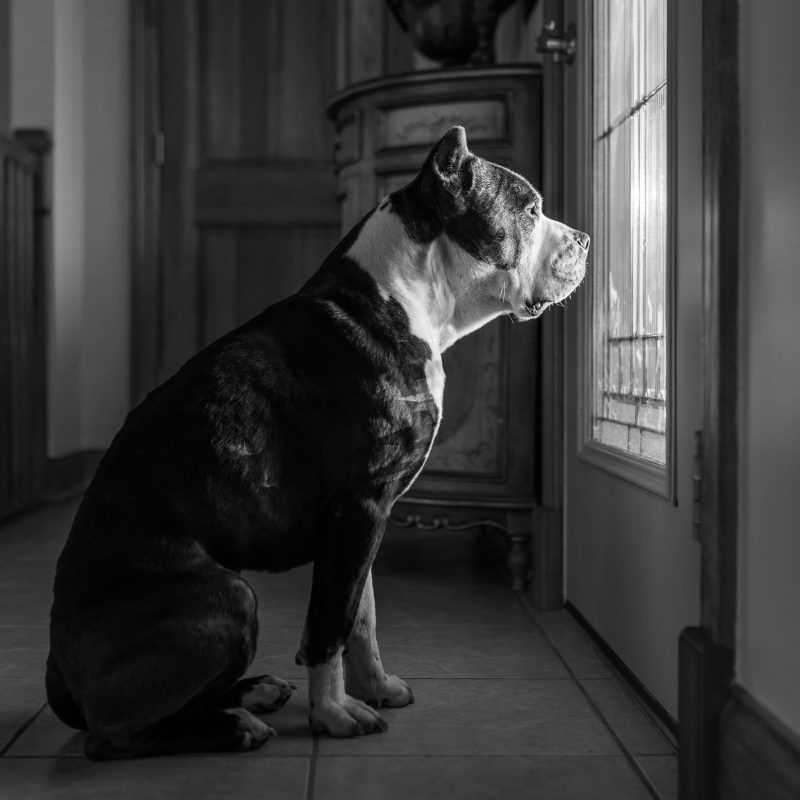
Is your pooch a fussy eater? Do they turn their nose up at their kibble or barely touch the tasty wet food you spoil them with? You’re not alone. Picky eating is more common in dogs than you may realize. But it can be frustrating when your fur baby doesn’t seem interested in their specially chosen grub. And concerning if they’re not getting the nutrients they need. So what’s the best dog food for picky eaters? This can vary depending on your dog’s preferences and dietary needs.
This woofy guide will give you the inside scoop on:
- Why dogs can be so picky with their food.
- Key nutrients your pup needs
- Clever tips to tempt even the fussiest pup.
- The best dog foods to try for picky pooches.
- Special considerations for different life stages
- And more…
So, let’s get right in!
Why Is My Dog Such a Fussy Eater?
Your pooch may turn their nose up at their dinner bowl for a few reasons. Here are some of the most common:
Bored with the Same Old Grub
Dogs can get bored of eating the same old food day in and day out, just like we do!
Their taste buds need a bit of variety to keep them interested at mealtimes.
Changes to Routine
Dogs are creatures of habit and changes to their usual routine can put them off their food. Things like:
- A new family member (human or pet!)
- Moving house
- New daycare or walker
- Their owner has a change in work hours
Not Hungry
Some pups just aren’t that food-motivated!
If you free feed your dog, they may pick at their food over the day rather than gobble it down in one go.
Anxiety or Stress
Anxious pups and those with separation anxiety may go off their food when they’re stressed.
Picky Puppy Syndrome
Some pups are just fussy eaters from the get-go! This is known as picky puppy syndrome.
These dogs turn their nose up at food their littermates gobble up without question. It’s not fully understood why some puppies are so picky.
Health Issues
An underlying health problem can also be behind a sudden disinterest in food. Issues like:
- Dental disease
- Digestive issues
- Food allergies or intolerances
- Organ disease
- Infection
- Pain
If your pup stops eating and it’s not just down to fussy eating, this is considered anorexia. It’s important to get them checked by a vet. Catching issues early means quicker treatment!
Key Nutrients for Dogs
We all want our pups to get the very best nutrition to keep them happy and healthy!
But with all sorts of dog foods out there making so many claims, it can be a difficult choice to make.
Here are the key nutrients your pooch needs in their diet, whatever their life stage:
Protein
Protein provides amino acids that help build and maintain your pup’s muscles, organs, and immune system. Look for a named animal protein like chicken, beef, or fish as the first ingredient.
How much: Adult dogs need around 18-27% of calories from protein. Puppies need up to 30%.
Fat
Fat is a concentrated source of energy for dogs and helps their bodies absorb some vitamins. Look for omega-3 and -6 fatty acids from fish, vegetable oils, and animal fat.
How much: Around 20% of calories for puppies and less active or overweight adult dogs. Up to 50% for highly active dogs.
Carbohydrates
Carbs provide fast energy from sugars and starches. They also supply fiber to keep your pup regular. Look for whole grains like brown rice and oatmeal.
How much: Around 45-60% of calories for adult dogs. Up to 70% for highly active dogs.
Vitamins and Minerals
Vitamins and minerals support almost all your pup’s bodily functions – from bone health to brain, nerve and muscle function. B vitamins also release energy from food.
How much: AAFCO minimum recommendations. Added supplements may provide more.
Water
This often-overlooked nutrient makes up around 70% of your pup’s body! Always provide unlimited fresh water. Canned or raw foods also contain moisture.
Switching Foods: Tips for Transitioning Fussy Eaters
Sudden changes in diet can cause digestive upsets. So, when changing foods, take things slow and steady! Here are some top tips:
Transition over 5-7 days
- Day 1 & 2 – 75% old food, 25% new food
- Day 3 & 4 – 50% old food, 50% new food
- Day 5 – 25% old food, 75% new food
- Day 6 & 7 – 100% new food
1. Stick to a Strict Routine
Dogs love routine so feed them at the same times every day. Put their bowl down for 10-15 minutes then pick it back up if they walk away. They’ll learn to eat when served.
2. Make Them Work for It
Hide your pup’s kibble around the house or garden and let them sniff it out. You can buy puzzle toys and snuffle mats to make finding their food fun. They’ll be hungry after all that brain work!
3. Warm It Up
Add a spoonful of warm water to kibble to bring out the aroma and make it more appealing. Don’t make it hot enough to burn their mouths.
4. Get Creative with Mix-ins
Mix tasty wet food, broth, or plain meat baby food into their kibble to make it more exciting.
5. Switch Proteins
If boredom is the issue, swap out chicken with fish, lamb, bison or venison for something new. Or try a limited ingredient diet with one protein and carbohydrate source.
6. Hand Feed for Fussy Pups
Sit with your pup and hand feed part of their meal. This helps reinforce that you and food are positive things. Just be patient!
7. Use Meal Toppers
Sprinkle tasty treats like shredded cheese, crumbled bacon, or dried liver on top of their food. But go easy on salty high-fat toppers.
8. Try a Raw Diet
Some picky pups love the taste and texture of raw food. Try commercial complete raw diets for balanced nutrition. Or speak to a vet nutritionist about preparing a homemade one.
Homemade vs. Commercial: What’s Best for Fussy Pups?
Unsure whether to opt for a commercial dog food or whip up homemade meals for your picky pooch? Let’s compare the pros and cons of each approach:
Homemade Dog Food
Pros
- Tailor recipes to your dog’s taste preferences
- More control over ingredients
- Can be cheaper than premium commercial foods.
Cons
- Time-consuming to prepare.
- Difficult to create complete and balanced recipes.
- Risk of nutritional deficiencies if not formulated properly.
Commercial Dog Food
Pros
- Designed to provide complete and balanced nutrition.
- Convenient – no preparation required.
- Specifically designed for dogs’ needs
- Range of formulas and flavors to tempt fussy eaters.
Cons
- Quality varies between brands.
- Your dog may dislike the flavor/textures
- Less control over exact ingredients
As long as you consult your vet and can put in the work to formulate recipes properly, homemade food is a valid option. But for most owners (and certainly the time-restricted among us!), a high-quality commercial food is the simplest way to get guaranteed balanced nutrition into your picky pet.
When to Be Concerned About Picky Eating
It’s normal for dogs to skip the odd meal here and there or have days when they eat less. Especially if it’s hot or they’re under the weather.
But if lack of appetite lasts more than 3 days or causes significant weight loss, chat with your vet.
Likewise, if you notice any of these red flags along with picky eating or lack of appetite:
- Lethargy
- Increased thirst
- Vomiting
- Diarrhea
- Loss of muscle
- Poor coat
These can suggest an underlying health issue needs checking out asap.
Better safe than sorry when it comes to your pup’s health!
If you’ve tried all the tips to tempt a picky pup to no avail, it could be time to switch up their food.

Here’s Our Pick of Dog Food For Picky Eaters
| Food | Details |
| Nom Nom Fresh Whole Food Dog Meals | Gently cooked meals made from restaurant-quality ingredients tailored to your pup |
| The Farmer’s Dog Fresh Food | Customizable fresh food with beef, chicken, turkey, or pork recipes |
| JustFoodForDogs Daily Meals | Balanced vet-designed meals with certified ingredients |
| Stella & Chewy’s Freeze-Dried Raw | Grain-free raw food that retains nutrients through freeze-drying |
| Blue Buffalo Wilderness High Protein Grain Free | Features real meat as the first ingredient with grain-free carbs |
| Merrick Grain Free Real Chicken + Sweet Potato Recipe | Grain and gluten-free with leading deboned chicken ingredient |
| Wellness Core Original Turkey & Chicken | Protein-packed with turkey and chicken meal plus probiotics |
| Taste of the Wild Pacific Stream Puppy Formula | Fish-based limited ingredient diet great for sensitive tummies |
| Purina Pro Plan Veterinary Diets HA Hydrolyzed | Extremely digestible novel protein and carb sources – (veterinary approval is required) |
| Hill’s Science Diet Adult Sensitive Stomach & Skin | Easy to digest rice-based food with prebiotic fiber |
Pay attention to any ingredients your pup is sensitive to. And be sure to transition slowly between old and new food.
Mixing them together over 7 days helps avoid tummy upsets. Slowly decrease the old food while increasing the new.
Picky Eating at Different Life Stages
Fussy eating can pop up at any time in your dog’s life. But some life stages make pups more prone to sudden pickiness.
Here’s how to handle fussy eaters at different life stages:
Puppy Picky Eating
Puppies can be notoriously tricky eaters! That’s why puppy picky eater syndrome is so common. Tips to try:
- Stick to scheduled meals: Leave the food down for 15-20 minutes then pick it back up until the next meal.
Use meal toppers: Sprinkle yummy wet food or shredded chicken on top. - Offer treats in toys: Let them sniff out small treats in a puzzle toy for motivation.
If your pup is refusing food altogether or having issues switching foods, see your vet. It could signal an underlying problem.
Adult Picky Eating
Adult dogs tend to eat less than in their puppy growth spurts. But a too-fussy eater risks missing out on key nutrients. Attempt to:
- Get creative with mix-ins: Mix wet food or broth into kibble to jazz it up.
- Make them work: Use snuffle mats or puzzle toys to spark their appetite.
- Use tough love: Pick up uneaten food until the next mealtime.
If fussy eating lasts over 3 days or causes weight loss, it’s vet visit time.
Senior Dog Picky Eating
It can be worrying when a senior dog starts getting fussy. Their nutritional needs are higher, but appetite can decrease. You could try:
- Offer smaller meals: Give them their daily food allowance split into a few mini meals.
- Heat it up: Gently warm food to make it more aromatic.
- Use soft food: Canned or raw food is easier to eat than dry kibble if they have dental issues.
- Ask about meds: Some medications can affect appetite. Discuss options with your vet.
Monitor senior pups closely and get any significant appetite changes checked ASAP as they can indicate illness.
When to Speak to Your Vet About Your Dogs Eating Habits
While simple fussiness is usually nothing to worry about, speak to your vet if:
- Fussy eating lasts over 3 days.
- Your pup is losing weight.
- There are other symptoms like lethargy or vomiting.
- Your pup won’t eat at all (anorexia)
- Issues pop up during major diet changes.
Puppies also need vet monitoring if they refuse food altogether or won’t transition to new food.
Your vet can:
- Run tests to check for underlying issues.
- Provide appetite stimulating medication if needed.
- Design a customized therapeutic diet.
- Monitor weight and nutrition.
- Advise the next steps.
The sooner any problems are caught, the better!
The Takeaway:
The bottom line when it comes to picky pup eating is – don’t panic!
A healthy dog won’t voluntarily starve themselves, even if they do skip a few meals.
Stick to a strict feeding routine, get creative with food, and use tough love by picking uneaten food up.
Then if fussy eating persists or you notice concerning symptoms, speak to your vet for tailored advice.
With patience and the right approach, you can get even the fussiest pooch excited for chow time again!
Now, time for the…
FAQs
Q: When should you be concerned about a picky eater?
A: Contact your vet if a healthy dog goes longer than 2-3 days without eating. Or if a puppy misses more than 1 or 2 meals. Also be concerned if you notice weight loss, lethargy, vomiting etc along with fussy eating.
Is it okay to give in to my picky pooch?
Giving your pup what they want can reinforce picky eating behavior. Stick to scheduled meals of balanced food tailored to their needs.
How long can a healthy dog go without eating?
Most dogs can go 1-2 days without eating before it becomes a concern. Puppies may only last 24 hours. Seek veterinary advice if appetite decreases.
Should I free feed my picky dog?
Free feeding makes it harder to monitor intake. Stick to set mealtimes, picking up uneaten food after 10-15 minutes until their next scheduled meal.
Is human food okay for a picky eater?
While some human foods are safe for dogs, they don’t provide complete nutrition. Use sparingly and avoid onion, chocolate, grapes, macadamia nuts, xylitol etc.
Could my dog have food allergies or intolerances?
If your dog shows signs like itching, ear infections, vomiting or diarrhea, a veterinary supervised elimination diet trial may be warranted to identify food triggers.
Still have questions? Reach out. We’re happy to help get your pup excited about mealtimes again!


